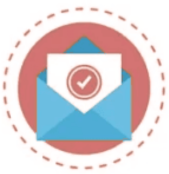In today’s world, Email Marketing Tools in Digital Marketing play a crucial role in digital marketing. Businesses of all sizes use these tools to connect with their customers, promote products, and drive engagement. This guide will explore the best email marketing tools available and how they can enhance digital marketing strategies.
What is Email Marketing?
Email marketing is a way for businesses to send messages to a group of people through email. It’s a powerful tool because it allows direct communication with customers. This is especially helpful for businesses that want to build strong relationships and keep customers updated on products, offers, and news.
Why Use Email Marketing?
- Reach a Wide Audience: Email can reach many people at once, even if they are in different parts of the world.
- Cost-Effective: Compared to other marketing channels, email marketing is affordable.
- Engage with Customers: Email allows businesses to create personalized messages, making customers feel valued.
- Easy to Track: With email marketing tools, businesses can see who opens their emails, clicks on links, and takes action.
Top Email Marketing Tools in Digital Marketing
There are many email marketing tools available, each with unique features. Here, we’ll cover some of the most popular options:
1. Mailchimp
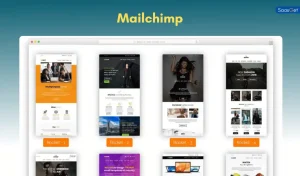
Mailchimp is one of the most well-known email marketing tools. It is user-friendly and offers several features:
- Drag-and-Drop Editor: Create emails without needing design skills.
- Automation: Send emails automatically based on customer actions.
- Analytics: Track open rates, clicks, and conversions.
- Pricing: Mailchimp offers a free plan, making it a good option for small businesses.
2. ActiveCampaign
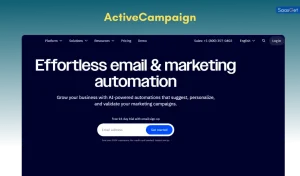
ActiveCampaign is a powerful tool that focuses on automation and customer engagement.
- Automation: Set up complex workflows to engage customers.
- CRM Features: Manage customer data and interactions.
- A/B Testing: Test different email versions to see which performs better.
- Advanced Analytics: Provides in-depth insights into customer behavior.
3. Sendinblue
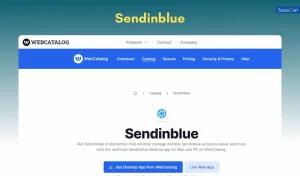
Sendinblue is known for its simplicity and effectiveness, offering both email and SMS marketing.
- Personalization: Create personalized messages for different customer groups.
- SMS Marketing: Send text messages in addition to emails.
- Transactional Emails: Send order confirmations, receipts, and more.
- Affordable: Sendinblue has flexible pricing, with a free plan.
4. GetResponse
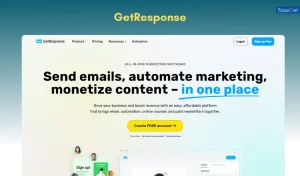
GetResponse is an all-in-one platform that offers a variety of digital marketing features.
- Landing Page Builder: Create landing pages to support your campaigns.
- Webinars: Host webinars to engage your audience.
- Marketing Automation: Automate tasks to improve efficiency.
- Detailed Analytics: Track every aspect of your email campaigns.
Benefits of Using Email Marketing Tools
Using email marketing tools can significantly improve digital marketing efforts. Here are some benefits:
1. Saves Time and Effort
Email marketing tools automate tasks, saving businesses time. For example, instead of sending individual emails to each customer, businesses can set up automated workflows.
2. Increases Engagement
With email marketing tools, businesses can send targeted emails to specific groups. For instance, a business can send a special offer to new customers and a different message to loyal ones.
3. Provides Insights
Email marketing tools provide data on customer interactions, allowing businesses to see what works and what doesn’t. This data helps in improving future campaigns.
Top Email Marketing Tools in Digital Marketing (Continued)
5. Constant Contact
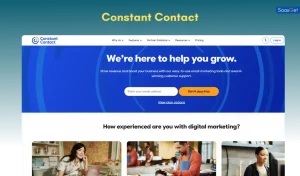
Constant Contact is a popular email marketing tool that is easy to use and ideal for small businesses.
- Event Marketing: Manage and promote events, making it useful for businesses hosting webinars or in-person events.
- Survey and Polls: Collect customer feedback directly within emails.
- Contact Management: Easily import, categorize, and manage your contact lists.
- Reporting: Offers reports on email performance to understand customer engagement.
Constant Contact is beginner-friendly, and its tools are designed for businesses looking to build their online presence.
6. HubSpot
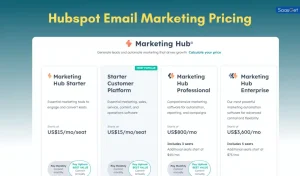
HubSpot is a comprehensive marketing platform that includes email marketing tools among other features.
- CRM Integration: HubSpot’s CRM integration makes it easy to manage customer relationships.
- Personalized Campaigns: Send targeted and customized emails to different audience segments.
- Automated Workflows: Set up automated email workflows based on customer actions.
- Detailed Reporting: Track email performance across various metrics to improve strategies.
HubSpot is ideal for companies looking for a platform that combines email marketing with customer relationship management (CRM).
7. Moosend
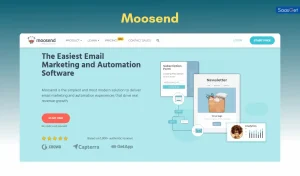
Moosend is an affordable and simple email marketing tool, known for its ease of use.
- Pre-built Templates: Use templates to quickly create beautiful emails.
- Email Automation: Automate email sequences for different actions, like welcoming new customers.
- Analytics and Reporting: Track open rates, click rates, and more.
- Ecommerce Integration: Connects easily with online stores to boost sales.
Moosend is well-suited for beginners who want a straightforward tool with essential features.
8. Zoho Campaigns

Zoho Campaigns is part of the Zoho suite, known for supporting various business functions, including marketing.
- Drag-and-Drop Editor: Easily create emails without coding.
- Automation: Automate emails for actions like new subscriptions or abandoned carts.
- Personalization: Send emails tailored to each subscriber.
- Survey Integration: Integrate surveys to collect feedback from customers.
Zoho Campaigns is a good choice for businesses already using Zoho products as it integrates seamlessly with other Zoho tools.
How to Choose the Right Email Marketing Tool
Choosing the best email marketing tool depends on the specific needs of your business. Here are some factors to consider:
1. Budget
Email marketing tools offer different pricing plans, including free options and premium subscriptions. Small businesses might prefer a free or low-cost plan, while larger companies may need advanced features from a premium plan.
2. Ease of Use
Some email marketing tools are more user-friendly than others. If you’re new to email marketing, consider a tool with a simple interface, like Mailchimp or Moosend.
3. Features Needed
Different tools come with various features, such as automation, analytics, and CRM integration. Identify which features are essential for your business. For example:
- If automation is important, tools like ActiveCampaign or HubSpot are suitable.
- If you want CRM integration, HubSpot and Zoho Campaigns are good choices.
- For eCommerce businesses, Moosend or Omnisend might be ideal.
4. Customer Support
Reliable customer support is essential when using any tool. Look for tools with good customer service, such as live chat, email support, or phone support. Mailchimp and GetResponse are known for their strong support teams.
Steps to Create a Successful Email Marketing Campaign
Creating a successful email marketing campaign involves a few key steps. Here’s a simple guide:
Step 1: Define Your Goals
Start by deciding what you want to achieve with your email marketing. Common goals include:
- Building Brand Awareness: Introducing people to your brand.
- Driving Sales: Promoting products or services to encourage purchases.
- Nurturing Leads: Engaging with potential customers to build trust.
Step 2: Choose Your Target Audience
Identify the group of people you want to reach. Segmenting your audience allows you to send relevant messages to each group, making your emails more effective.
Step 3: Craft Compelling Content
Create content that is simple, clear, and engaging. The main content elements include:
- Subject Line: Keep it short and interesting to grab attention.
- Body Content: Use simple words and keep sentences short. Highlight benefits and include a call-to-action (CTA).
- Images: Include relevant images to make the email visually appealing.
Step 4: Send and Track Results
After sending your email, track its performance. Most email marketing tools offer analytics showing open rates, click-through rates, and conversions. Use this data to improve future campaigns.
Top Email Marketing Tools in Digital Marketing (Continued)
9. AWeber
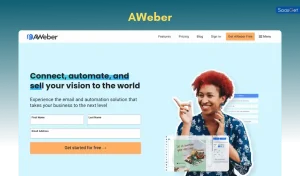
AWeber is a simple and effective tool for businesses of all sizes. Known for its reliability, AWeber offers tools to help users connect with their audience.
- Drag-and-Drop Editor: Easily design professional emails.
- Automated Campaigns: Set up automatic responses for events like new sign-ups.
- A/B Testing: Test different email versions to optimize performance.
- Reporting: Detailed insights into email engagement and conversion rates.
AWeber is an ideal choice for small businesses and those new to email marketing, thanks to its easy setup and friendly interface.
10. ConvertKit
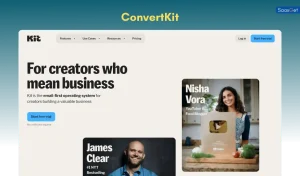
ConvertKit is a tool created specifically for content creators, such as bloggers, YouTubers, and online educators.
- Automation Tools: Set up sequences to send targeted emails based on customer actions.
- Subscriber Tagging: Organize your audience based on their interests.
- Landing Page Builder: Create simple landing pages to collect leads.
- Analytics: Track email performance and engagement.
ConvertKit is an excellent choice for creators and small business owners who want to build a loyal audience through regular updates and personalized messages.
11. Omnisend

Omnisend is a marketing automation tool tailored for e-commerce businesses, offering email, SMS, and more.
- Multi-Channel Campaigns: Combine email with SMS, push notifications, and social media.
- Pre-built Templates: Quick and easy to create campaigns.
- Audience Segmentation: Divide your audience based on behavior and purchase history.
- Comprehensive Analytics: Get detailed insights on each campaign’s performance.
Omnisend is ideal for e-commerce brands aiming to create cohesive marketing campaigns across multiple channels.
12. SendX

SendX is an affordable and easy-to-use tool with all the essential email marketing features.
- Unlimited Emails: Send as many emails as you need without worrying about limits.
- List Segmentation: Target specific groups within your audience.
- Automation: Create workflows to engage customers automatically.
- 24/7 Customer Support: Access support whenever you need it.
SendX is a great option for businesses seeking a cost-effective solution with solid customer support.
Email Marketing Best Practices
For a successful email marketing campaign, following best practices can make a big difference. Here are some tips:
1. Personalize Your Emails
Personalization can increase engagement by making customers feel valued. Use your audience’s name and send relevant content based on their interests.
2. Optimize for Mobile
Many people check emails on their phones, so make sure your emails are mobile-friendly. Use a responsive design and short sentences.
3. Focus on a Clear Call-to-Action (CTA)
Every email should have a clear CTA that guides the reader on what to do next. For example, if your goal is to promote a sale, your CTA could be “Shop Now.”
4. Test and Refine
Use A/B testing to try different email elements, such as subject lines or images, and see what works best. This helps you improve future emails.
5. Follow a Consistent Schedule
Consistency is key in email marketing. Send emails at regular intervals, whether weekly, bi-weekly, or monthly, to keep your audience engaged.
Measuring Success in Email Marketing
Understanding how well your email campaigns perform is essential. Here are some common metrics to track:
- Open Rate: The percentage of people who open your email. A good subject line can improve this.
- Click-Through Rate (CTR): Measures how many people clicked on a link in your email.
- Conversion Rate: The percentage of people who completed an action, like making a purchase.
- Bounce Rate: The percentage of emails that could not be delivered. High bounce rates may indicate issues with your email list quality.
- Unsubscribe Rate: Tracks the number of people who opted out of your emails.
By monitoring these metrics, you can determine what’s working and make adjustments to improve future campaigns.
Conclusion
Email marketing tools are essential in digital marketing, providing businesses with ways to reach their audience, build connections, and drive sales. By choosing the right tool and following best practices, businesses can make the most of their email campaigns and see real results.
Whether you’re a small business or a large company, there’s an email marketing tool that fits your needs. With the information provided, you can start exploring the best tools and strategies to build strong relationships with your audience and enhance your digital marketing efforts.


